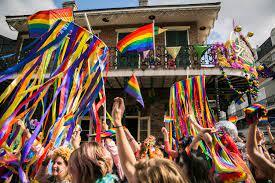Arbo Paths: Local landscapes herald the approach of winter
Published 7:00 am Wednesday, November 26, 2014

lined pond: The feathery bald cypress trees lining the Arboretum’s Piney Woods Pond are dressed in rusty fall color.
Photo by Pat Drackett
Leaves and pine needles have been steadily falling, carpeting the pathways here at the Crosby Arboretum.
The bald cypress trees lining the edge of the pond have grown into a truly spectacular sight, as they are now cloaked in ever-deepening hues of rusty orange.
Looking across the water from the Pinecote Pavilion, I am reminded of the photographs we have in our archives of this same area only a few decades ago, when the cypress trees were newly planted and much, much smaller. Today, they rocket forth from the water’s edge.
On clear blue days their reflection in the pond is a doubly magical sight.
As the leaves continue to fall, the structure of the trees and woody shrubs is being revealed.
The witch hazel at the edge of our Slough Exhibit continues to offer a show-stopping sight.
Around the corner, black fruit are still evident on the tree huckleberry (Vaccinium arboreum) growing over the bridge near the Visitor Center.
This never ceases to amaze me because we are so used to blueberries having finished fruiting a long time ago by now.
Also called farkleberry or sparkleberry, the exfoliating bark on this tree-form Vaccinium is particularly attractive now.
This tree and other blueberries on the grounds such as the Elliot’s blueberry (Vaccinium elliotti) are turning burgundy and scarlet. What stunning fall color these plants have!
Now that many of the trees are leafless, details stand out that you would not have noticed otherwise, such as the pointed buds of American beech (Fagus grandiflora) that look like tiny, pointed cigars.
Plump buds on our native pink honeysuckle azaleas (Rhododendron canescens) seem to be promising us that it will be a very good spring for blooms, to the delight of swallowtail butterflies, and to those strolling nearby who will enjoy the pleasant fragrance.
In the seven years I have been with the Arboretum, you might think that I have found every nook and cranny along the pathways, but still there are so many more that await my discovery.
It is highly likely that very little here escapes the eagle eye of grounds manager Terry Johnson, who indeed knows this property like the back of his hand, as he has been here for seventeen years and spends the majority of his day outside.
Terry is also a certified burn manager and has been preparing for our annual “fire season”, right around the corner.
Beginning on Thursdays and Fridays from 10:00 a.m. to 2:00 p.m. in January and February, weather permitting, prescribed fire demonstrations will be available.
If you would like to attend, call ahead around 9:00 a.m. to see if a burn will be taking place, as they will only proceed when the environmental conditions (i.e., wind speed and direction, and humidity) are favorable.
The native plant communities in our Coastal savannas benefit from burning.
The Crosby Arboretum has incorporated the practice of prescribed fire as a management tool for our exhibit maintenance.
Our Savanna Exhibit comprises roughly one third of our 64 acre interpretive site, and displays native species adapted to periodic fire.
We “apply” fire to our Pitcher Plant Bog each year. Other sections may be burned only every two or three years.
The result is an “outdoor classroom” containing a variety of ages of burned grasslands.
Some areas of the Savanna provide a more desirable habitat than others for certain species of birds, such as theHenslow’s sparrow, (Ammodramus henslowii), whose population numbers have declined nationally due to habitat loss.
These birds are found in the highest numbers in grassland areas which have experienced a fire event around three or four years ago.
The public is invited to visit to the Arboretum for two special events in December.
The first will be a gallery opening on Saturday, December 6, from 1:00 to 3:00 p.m., featuring photography by Brian Anderson of Purvis.
Brian is a self-described amateur photographer who was discovered one day capturing some fabulous images of Crosby Arboretum wildflowers.
His work will be on display through the end of February 2015.
Light refreshments will be served during this event. Saturday, December 13, from 1:00 to 3:00 p.m we will hold our annual Holiday Open House celebration.
Enjoy refreshments and browse our Gift Shop, which features the work of local artisans, several of whom will be displaying their handcrafts that day. Both holiday events are free to Arboretum members, as well as non-members.
We are already taking sign-ups by phone for the Pine Needle Basketry workshop with Judy Breland on January 10 from 9:30 a.m. to noon. To reserve your seat in this program , please call the Arboretum office at (601) 799-2311.
Bring your family and friends over the holidays to take a walk at the Arboretum! Our hours are Wednesday through Sunday from 9 a.m. to 5 p.m.
We will be closed on Thanksgiving Day, but open on Friday, November 28.
The Arboretum is located in Picayune, off I-59 Exit 4, at 370 Ridge Road (south of Walmart and adjacent to I-59).
FORFURTHER EXPLORATION:
Visit the Native Plant Data Base on our website atwww.crosbyarboretum.msstate.edu to research any of the plants discussed in this column that you are unfamiliar with, so you will recognize them the next time you encounter them.
By Patricia Drackett
Crosby Arboretum Director





